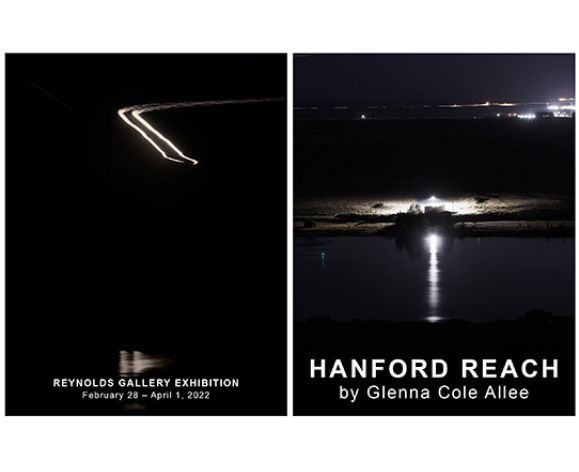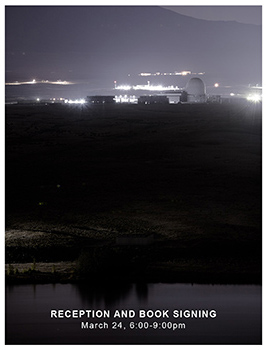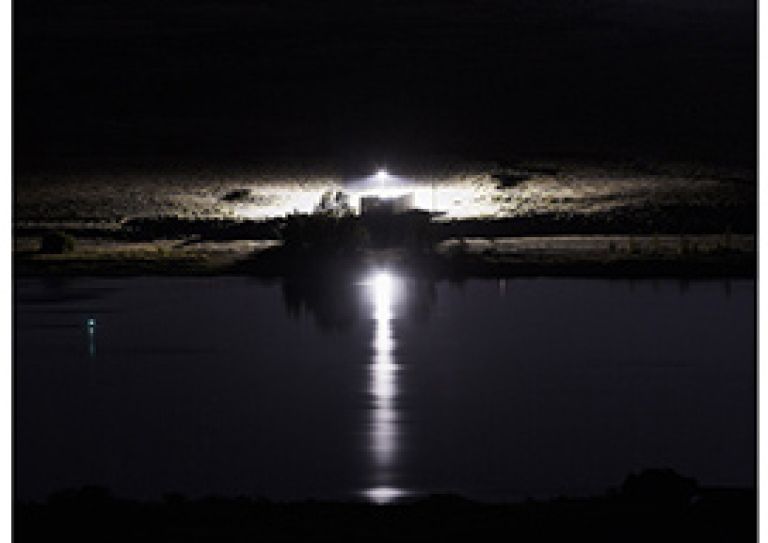Hanford Reach Exhibition opens on February 28, at the Reynolds Art Gallery in the Jeannette Powell Art Center. The exhibition is on view until April 1. The gallery is free and open to the public, Monday - Friday, 9am - 4:30pm.

Glenna Cole Allee’s Hanford Reach exhibition combines photography, sound, and video projection to “map” Hanford: the Manhattan Project site in eastern Washington State that contains a decommissioned nuclear reactor reimagined as a museum; multiple nuclear reactors and processing plants in various stages of demolition, entombment, preservation, and active production; abandoned pioneer townships and orchards; and Native American sacred ancestral grounds. Hanford created plutonium for the Trinity test and the Fat Man bomb dropped upon Nagasaki on August 9th 1945. Through four decades of the cold war thereafter, the site created the lion’s share of the plutonium in the US nuclear arsenal. Hanford Reach, the part of this vast terrain for which the exhibition is named, was closed to public access as a nuclear buffer zone for four decades, then reopened as a national monument and wildlife refuge in the year 2000.
Mural-scale landscape photographs line the gallery walls while video projections cycle through maps of the Hanford Area, the Columbia River, the 1940s railway lines, and the chemical plumes reaching toward the river under the ground surface of the site. These visual elements anchor a surround sound-collage created from fragments of conversations recorded with residents from farmlands and cities within the close-range radius of the nuclear territories. Interviews include Hanford scientists, Native American elders, displaced farmers and farmworker advocates, Downwinders, and others. Together these narratives create a complex weave that counteracts historic legacies of silence, secrecy, and denial. A long look at lives and landscapes bearing secrets and scars of the atomic/nuclear era, Hanford Reach reflects the complexity of individual and collective memory, and the manner in which personal lives are ensnared within dynamics of state power.
Work from the installation is published in the book Hanford Reach: In The Atomic Field (Daylight Books, 2021). The book contains an introductory essay by Mark Auslander, Ph.D. Transcript excerpts and images can be viewed at: www.glennacoleallee.net.
The Contributors and Collaborators
Glenna Cole Allee is an interdisciplinary artist. Her work explores the shifting relationships between place, myth and memory. She holds an MFA from San Francisco Art Institute and a BA from Reed College and has exhibited nationally and internationally.
Mark Auslander, Ph.D. is a sociocultural and historical anthropologist, who works at the intersection of environmental transformation, ritual practice, aesthetics, kinship, and political consciousness, with particular emphasis on Africa and the African Diaspora. His book The Accidental Slaveowner: Revisiting a Myth of Race and Finding an American Family (University of Georgia Press, 2011) re-reads American racial politics under slavery and post-slavery through structuralist approaches to mythology and kinship.
Jon Leidecker has been producing music under the name Wobbly since 1990, improvising with recordings to produce music which inherently questions the act of being captured. Recent performances deploy a battery of mobile devices driven by their built-in microphones, reacting spontaneously with variations on the notes and sounds they believe themselves to be hearing.
Join us for an in-person reception, artist talk, and book signing. March 24 at 6 p.m.. Live Zoom feed of the talk will be available.

Contact Us
Jeannette Powell Art Center
University of the Pacific
3601 Pacific Ave.
Stockton CA 95211




